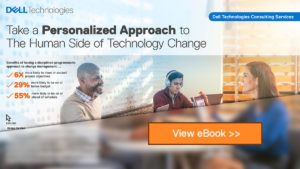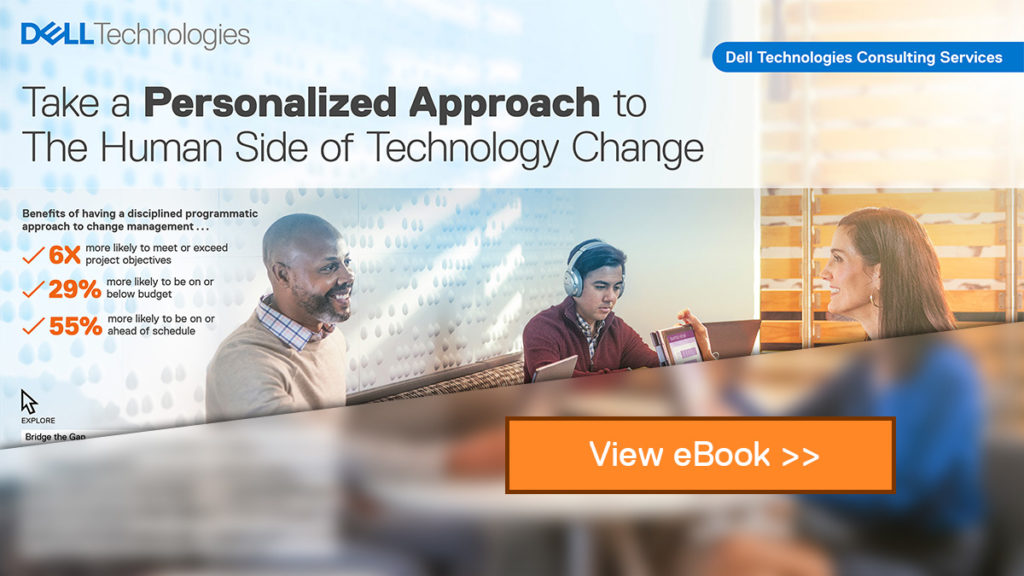Sound familiar? You’re not alone. All too often organizations invest in new technology and when they roll it out to their workforce, adoption wanes and ROI falls short of expectations. Unfortunately, organizations are still using old methods for communicating and engaging workers. They take the approach of sending out an email on Monday for training on Tuesday with a “go live” on Wednesday. Workers are left confused and often struggle to use the new technology – which may mean they’re only using a portion of its’ capabilities or just continuing to work the old way. Either way, this is not a recipe for success. These old-style approaches just don’t cut it anymore.
There are more generations in the workforce than ever before – Baby Boomers, Gen X, Millennials and Gen Z. With so many generations in the workforce, technology adoption is bound to differ among workers which means organizations change their strategy to realize expected results.
Rapid Technology Change Is the New Norm – Approach It from the Worker’s Point of View

The pace of technology change continues to accelerate at staggering speeds. Cloud-based services and modern applications are constantly rolling out new features and functions. There’s a trend in the industry with cloud-services vendors (i.e. Microsoft, Salesforce, ServiceNow) to invest in new Customer Success Manager roles focused on maximizing usage and adoption.
Unfortunately, many organizations fall short when it comes to preparing their workforce to rapidly adopt new workforce transformation technology. Why? They miss the mark by not approaching technology change from their workers’ point of view. As IT teams and lines of businesses determine which technology to rollout to their workforce, they should embrace a similar “customer success” mindset focused on maximizing worker experiences and adoption. New technology holds the promise of greater productivity, easier collaboration and modern communication – but only if the workforce is prepared and ready to embrace change. Only then will your organization realize the expected results of your investment.
Reap the Benefits of New Technology Faster
Worker adoption can make the difference between successful technology roll-outs and ones that miss the mark altogether. The most successful organizations recognize the need for a formal Adoption and Change Management (ACM) program to ensure they’re communicating, preparing and shepherding workers through the change journey.
Unfortunately, too often organizations take the approach of sending out an email on Monday for training on Tuesday with a “go live” on Wednesday. This communication experience just doesn’t cut it anymore.
A campaign centric model is critical to the success of engaging the workforce and driving adoption. Workers are bombarded with communications all the time which is why it’s essential to explore creative ways to communicate, amp up the buzz and generate excitement for what’s to come (videos, posters, genius bars, etc.). Ultimately success requires a sustained and measured approach to help guide workers through the change journey.
What’s in It for Workers?
Changes to workforce technology is ultimately a personal experience for workers. From their point of view, they want to understand what’s in it for them, why they should care and how easy is it to change. They’re asked all the time to use new tools; but without helping them understand the benefits and how their jobs will be more efficient (what’s in it for them), there’s often little motivation to change. A comprehensive, persona-driven approach to driving adoption ensures awareness, communications, education, governance and job aids to be more targeted, tailored and effective. We recommend organizations develop an in-depth understanding of workforce personas, how workers do their jobs today and how they’ll get work done in the new environment.
With this awareness, organizations should design a targeted ACM program to move workers through the cycle of change and gain their buy-in to embrace new services with enthusiasm. Overall this persona-driven model for adoption and change management will better position organizations to maximize their technology investments and reap the rewards and benefits of a more productive workforce. And workers benefit from modern tools that make it easier to do their jobs.
Read our perspective in our new eBook Take a Personalized Approach to the Human Side for Technology Change to understand the key components of a successful ACM program.
Continue learning more about ACM with Why Adoption and Change Management Programs Are Good for Business (Infographic).
Let us know if you have any comments or questions!




